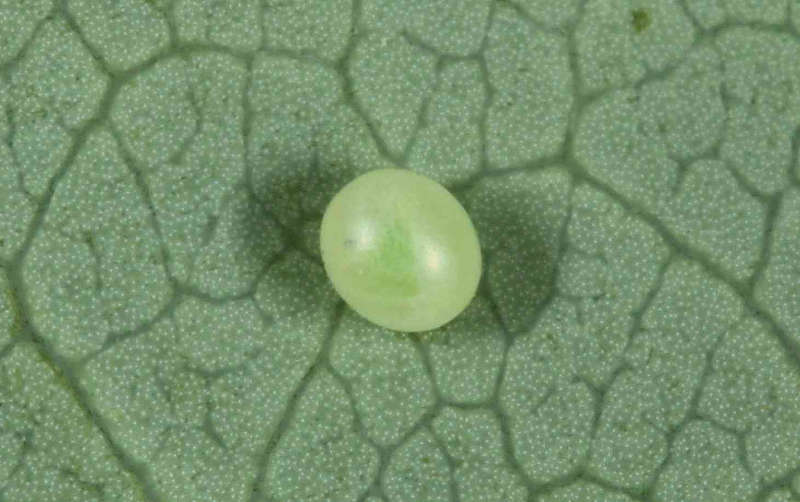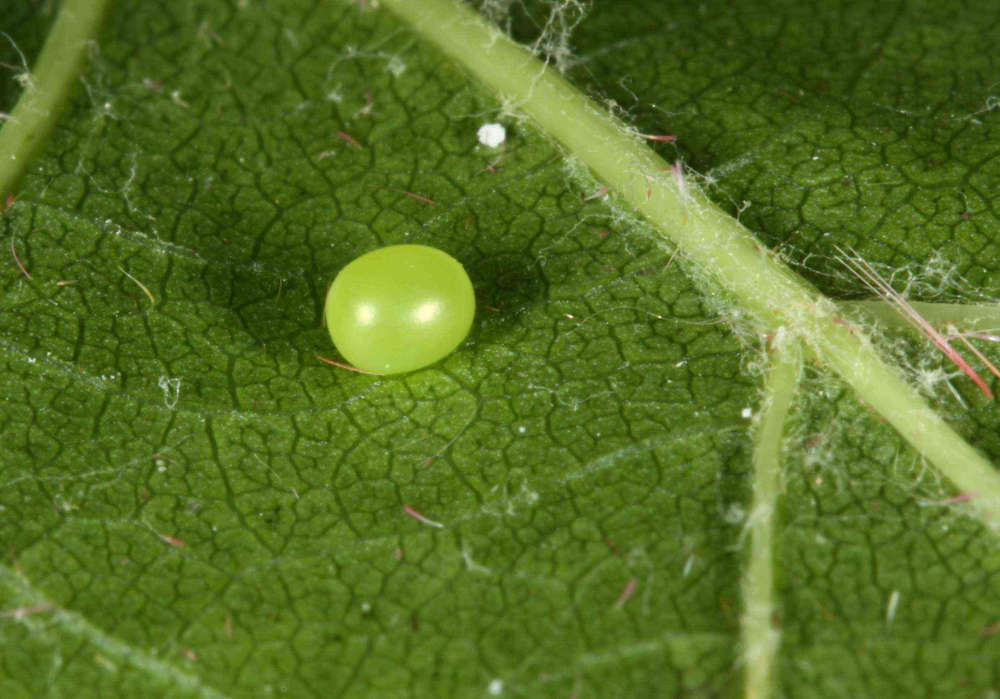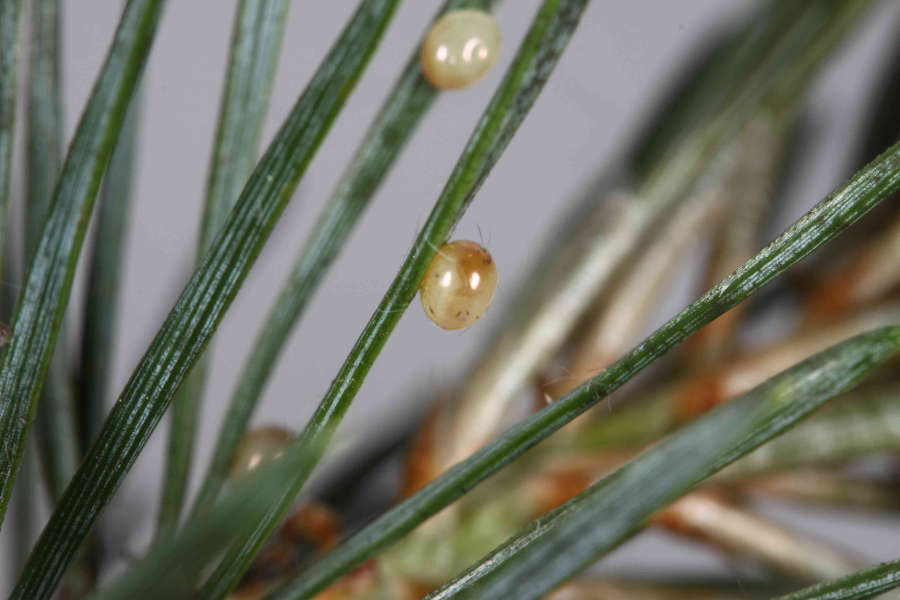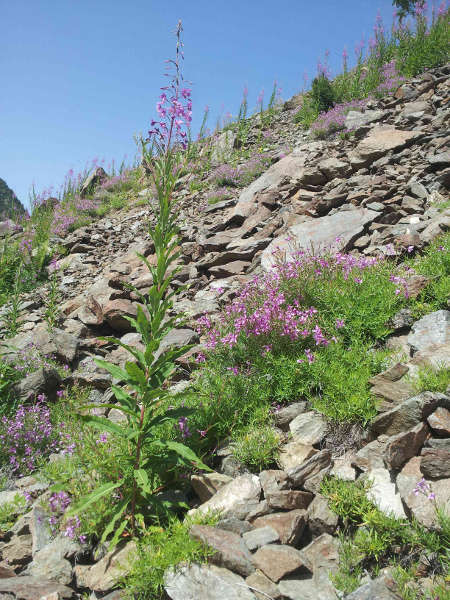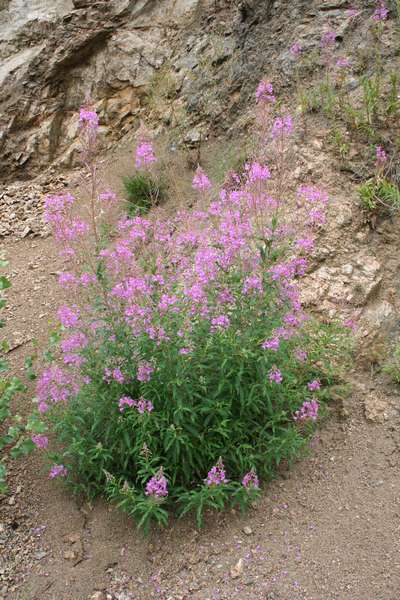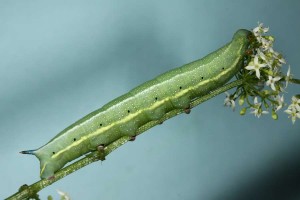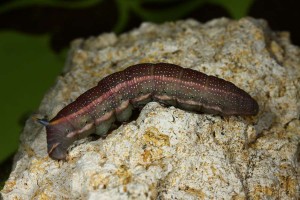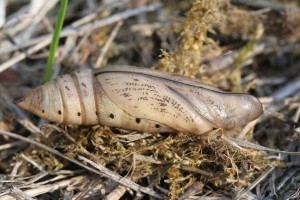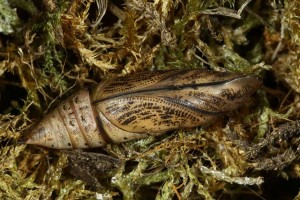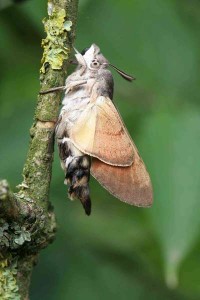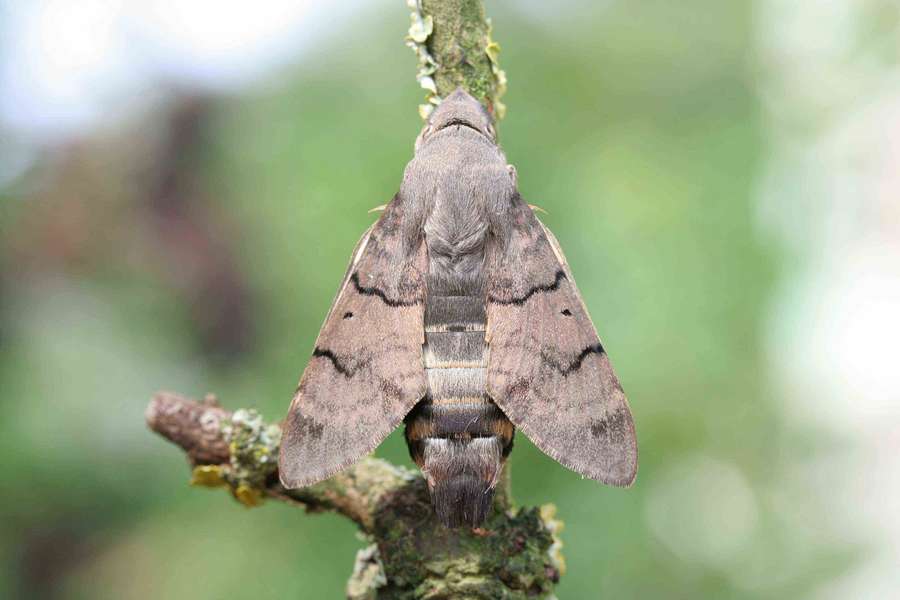The Sphingidae are relatively well in captivity. These farms are in large cages to end toasting, style pantry.
Looking for eggs
We can search the eggs in nature, but it is particularly difficult. However, with a little usual, we start to think like the female of Sphingidae which will respond, and we quickly spotted the plant on which it will lay her eggs. You should know that in principle, a female respond more easily on a small Bush isolated on the adult tree drowned in a forest of its congeners. Small shrubs, edge of forest and roadside plants are always very productive. Knowing this, remains to find the eggs. They are usually laid isolation under the leaves, most often at the end of the twigs so under young Terminal leaves. The egg is spherical, and, in most cases, green. Find eggs of Deilephila elpenor, or of Hemaris tityus is easy enough, while locate their chenille is an altogether different problem.
Eggs of Sphingidae: from left to right, Hemaris fuciformis, Deilephila elpenor, Sphinx maurorum (attention, snapshots are not on the same scale) © J. Hanif
Looking for caterpillars
It is a little easier. Search for caterpillars but requires a minimum knowledge in Botany. For the 24 species of Sphingidae of the fauna of France, it will be relatively simple, knowledge of plants 50 will be ample. The purchase of a good fauna of France is the most convenient solution, but also the most expensive. For my part, I use the great flora in colour of Gaston Bonnier. This remarkable book in 5 volumes is the essential complement to the field entomologist. It is used quite easily around € 300/400. To take the field, it will settle a small Guide (there are dozens) because of course you not walking 14 kilo of books when you are prospecting.
The identification of good plant, one that will 'give', comes experience and habit. Soon enough, we know find interesting plants, those that are attacked, on which the female is most likely to respond. Approaching, we will always watch on the ground. The droppings left by caterpillars of Sphinx are highly recognizable.
Exactly as for eggs, find too many plants-host does not often find many caterpillars. The small isolated plant on a sunny slope, along a path or road is often far more productive that one hectare of the same plant in a splendid natural biotope. The females follow the roads, the paths along which they can forage. They lay often side sunny, under the Terminal leaves of the branches most identified and isolated from the tree / Bush. It will look for bare poles of their leaves, sign of adult caterpillars. It happens in these cases that are too late, the caterpillars are already parties to pupate at the foot of the plant, but often far from it. This happens very often.
The perfect situation: feet of Epilobium dodonai and e. angustifolium on bare stony or exposed soil due South. In the biotope from left, were found the caterpillars of Hyles vespertilio and Proserpinus proserpina on the foot of right, eggs and caterpillars of Deilephila elpenor. © J. Hanif
Caterpillar harvested are placed in aerated containers, especially not with boxes plastics where occur too high condensation. I use large jars the lid has been cut and wire. Always place paper towel at the bottom of the jars of hunting, and of course never leave these jars in the Sun.
Livestock
The plants will be placed freshly cut in water. Attention to drownings, the caterpillars love down along the stems, and if they can reach the water, they are there drown for sure. It is therefore necessary to obstruct the opening of the container with paper or cotton.
Normally, the Caterpillar in livestock stopped quickly on his food and begins to feed. If she does not eat, is that the plant is not appropriate, either that the Caterpillar is moulting, and finally the last possibility is that it goes to pupate and therefore it is seeking favorable to its pupation site. In this case, it almost always seeks to be buried. It is common as a caterpillar is Sphingidae completely change colour before its pupation, veering from soft green to dark green, grayish-beige see purplish brown.
Example of simple livestock from a caterpillar found adult. Caterpillar L5 of Macroglossum stellatarum on Galium mollugo and the same a few days later in prenymphose seeking to be buried. Pupae of the same species, just formed and a few days before emergence. Imago drying its wings, and imago ready to take his vol. © J. Hanif
The usual mistakes of novice are almost always the same:
-cage too small and poorly ventilated
-too many caterpillars in a small space
-cage in the shade, see in the dark
changed too rarely host plant
-dirty cage (feces accumulate and rot)
-water bottle not airtight (larvae descend along the branches and then drown very easily!)
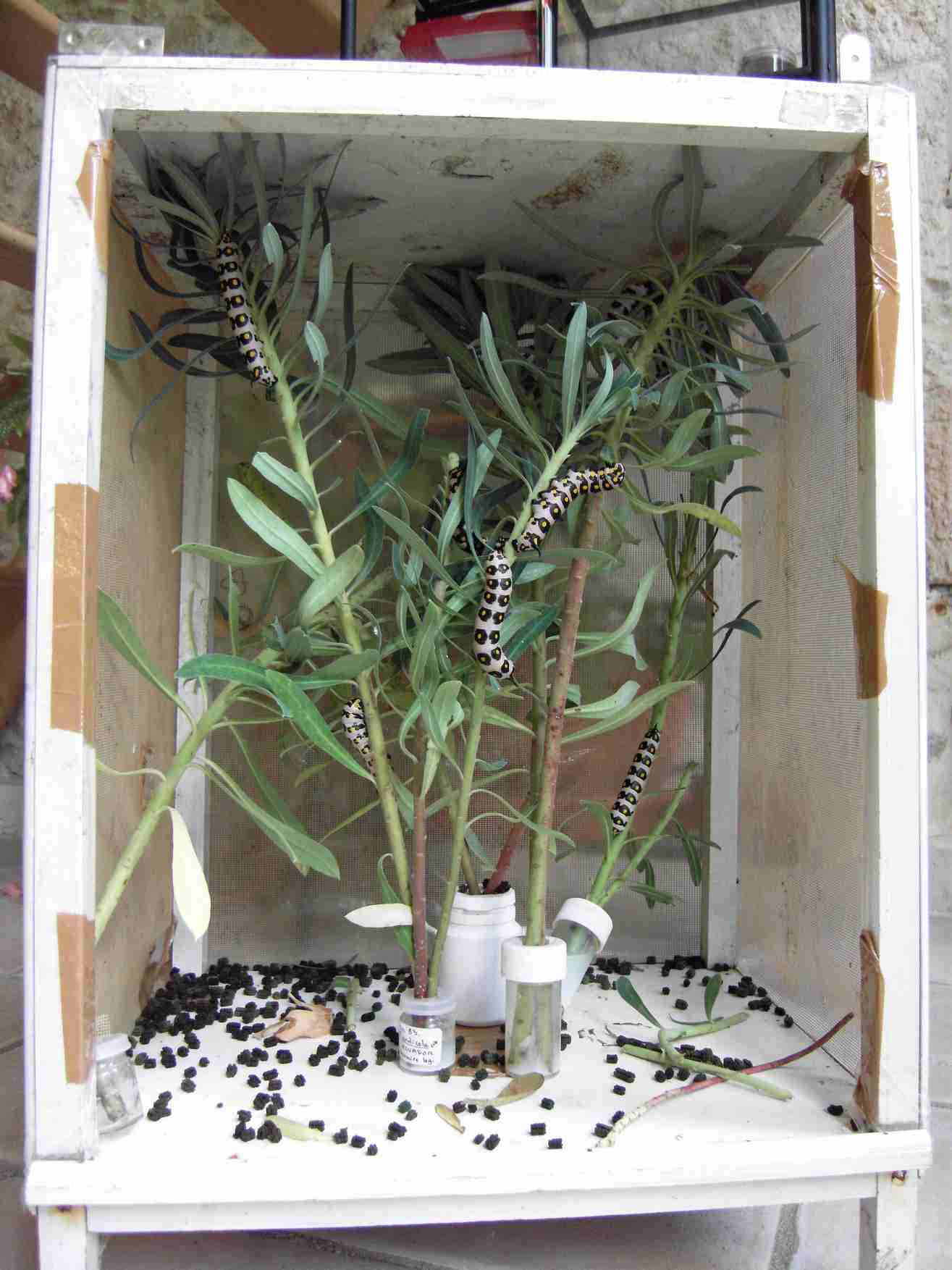
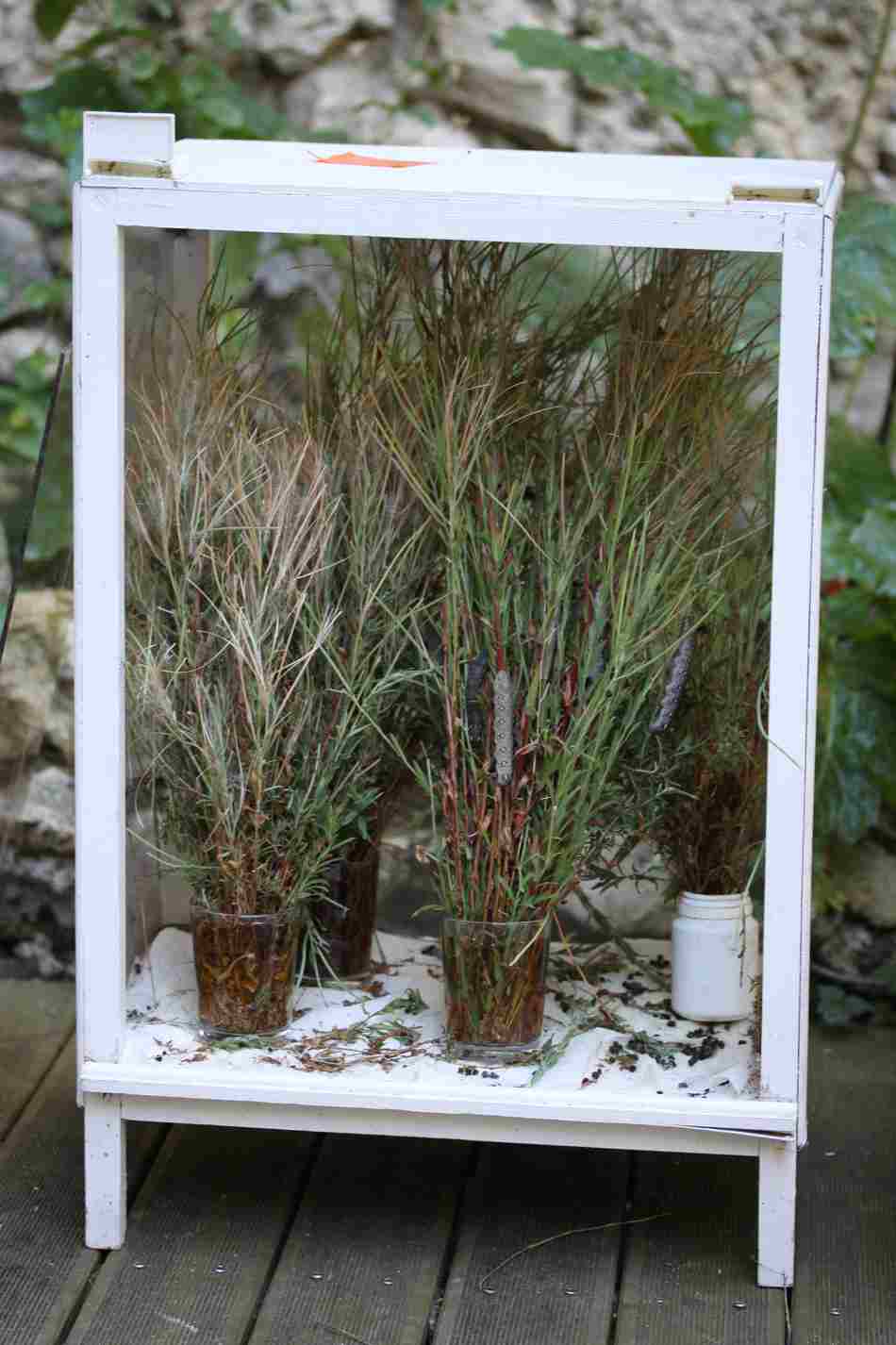
Cage aquaculture style "pantry" of Hyles nicaea (left) and Hyles vespertilio (right) © Jean Hanif
A butterfly farming is not easy. When a disease occurs, it generally loses completeness by the caterpillars, and if there are survivors, they will produce small or ill-formed pupae which will emerge puny butterflies (if they hatch).
Succeeding a beautiful farm with of imagos as beautiful as those that is collected in the wild is a feat that requires patience and great care.
This, one must add that each species with its requirements and that some species are much more capricious.
The delicate species include Marumba quercus. This species must be high to very large very airy cages, and dry atmosphere. The ideal is probably livestock on tree in pot and in the open air. Indeed a caterpillar on his plant leave almost never except at the time of pupation. Livestock on tree rule all the daily changes in plant-related problems, and the food is always top quality.
To make things worse the problem, the chrysalis of Marumba quercus does not support handling and dehydrates often during the winter. The simplest solution seems to be not the dig during the winter diapause. The butterfly out of him even from June to July.
The Hemaris are also a bit temperamental, especially fuciformis requiring heat and light.
In fact, appropriate to remember the conditions of life of the insect in the wild and try him reproduce in captivity. It is therefore primarily a matter of good sense.
It is fortunately species it is difficult to miss, even from the egg. The prize goes I think two Smerinthinae, Mimas tiliae and Laothoe populi. I think that even in the worst hygiene conditions that would destroy a breeding of Marumba quercus in one day, we can succeed a breeding of poplar Sphinx. However, if we want beautiful specimens, it is imperative to be with this species also rigorous than with the more delicate.
Get eggs from a female
Often, the simplest is to lay a female. It will need to distinguish between species that lay almost spontaneously in captivity, and those that need to feed. The four french Smerinthinae belong to the first category, and obtain their eggs is child's play. To accelerate the ponte, can add a leaf or a branch of the mother plant. On the other hand, other species will often be fed for several days until they decide to lay their eggs.
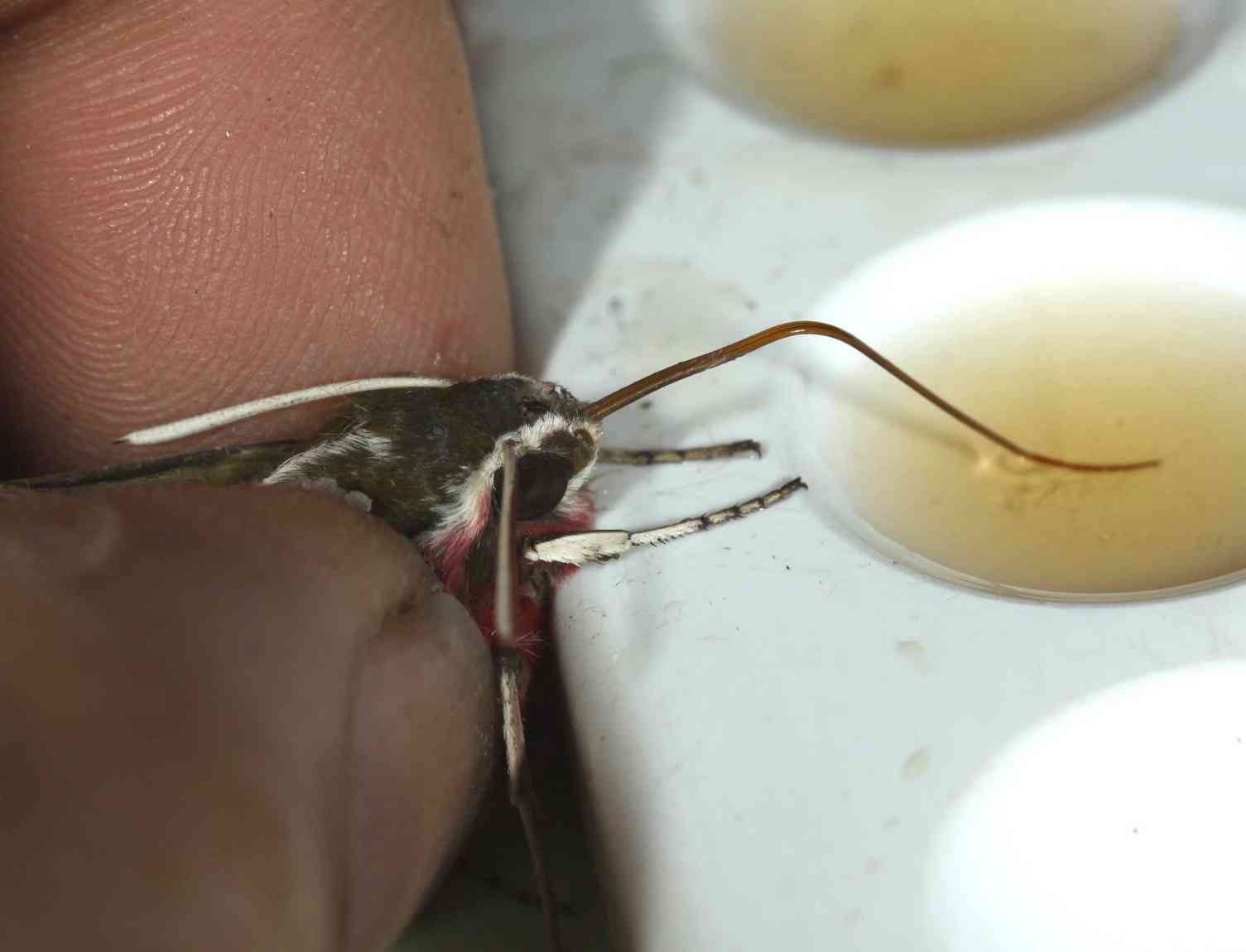
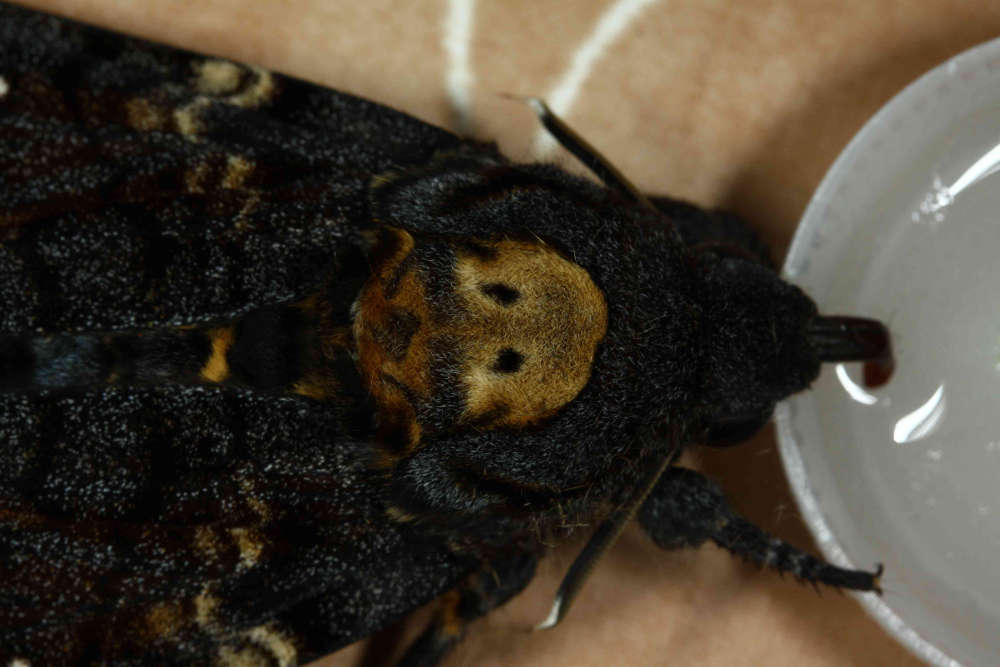
Manual feed of a female Hyles dahlii (left) and Acherontia atropos (right) © Jean Haxaire
It is easy to feed them by hand, by unrolling the proboscis of the female and immersing it in a highly sweet liquid. The insect is simply held between two fingers, wings folded on the back. For my part, I use a mixture of water, honey and cane syrup. From the contact with the liquid, the insect begins to feed. If it only lays the first night, he should do it quickly.
The eggs are kept in Petri dishes with absorbent paper background. It is often useful to spray them with pure water every 2 days. Watch out for excessive moisture that strongly affect the outbreaks. Upon hatching, the caterpillars must feed. If it fast a day, livestock is often permanently compromised. When it is sufficiently seasoned, it recognizes the egg that will hatch, and are then available in advance on the host plant. The Caterpillar uses very often the chorion of the egg, and this first meal is important. Do not deny it.
Marumba quercus crawler is not fed during the first stage. She eats its chorion, and stops quickly to moult. It should not be disturbed.
The young newly hatched Caterpillar is very fragile. It will be deposited on the host with a lot of precaution plant. Traditionally, it moves them with a small brush, and of course with fingers or pliers.
During the first two stages (up to the second Tin) it is advisable to bring them up in small volumes, and they support the glass jar not closed tightly and protected from direct sun that would kill them quickly. From the beginning of the third stage, it is imperative to put in ventilated cage (see above). A caterpillar at the first stage of Proserpinus proserpina or Deilephila porcellus is so small that we are obliged to have them on very little food and in a small space under penalty of not find them.
I recommend learning to recognize a caterpillar that will moult. It is very easy, his head seems "peeled away" from his body, and there are already new just cephalic capsule back. During this period, it is important not to handle the Caterpillar, and did not seek to unhook it from its branch. Anyway, it is always better not to manipulate a caterpillar, it will leave without it even on fresh food.
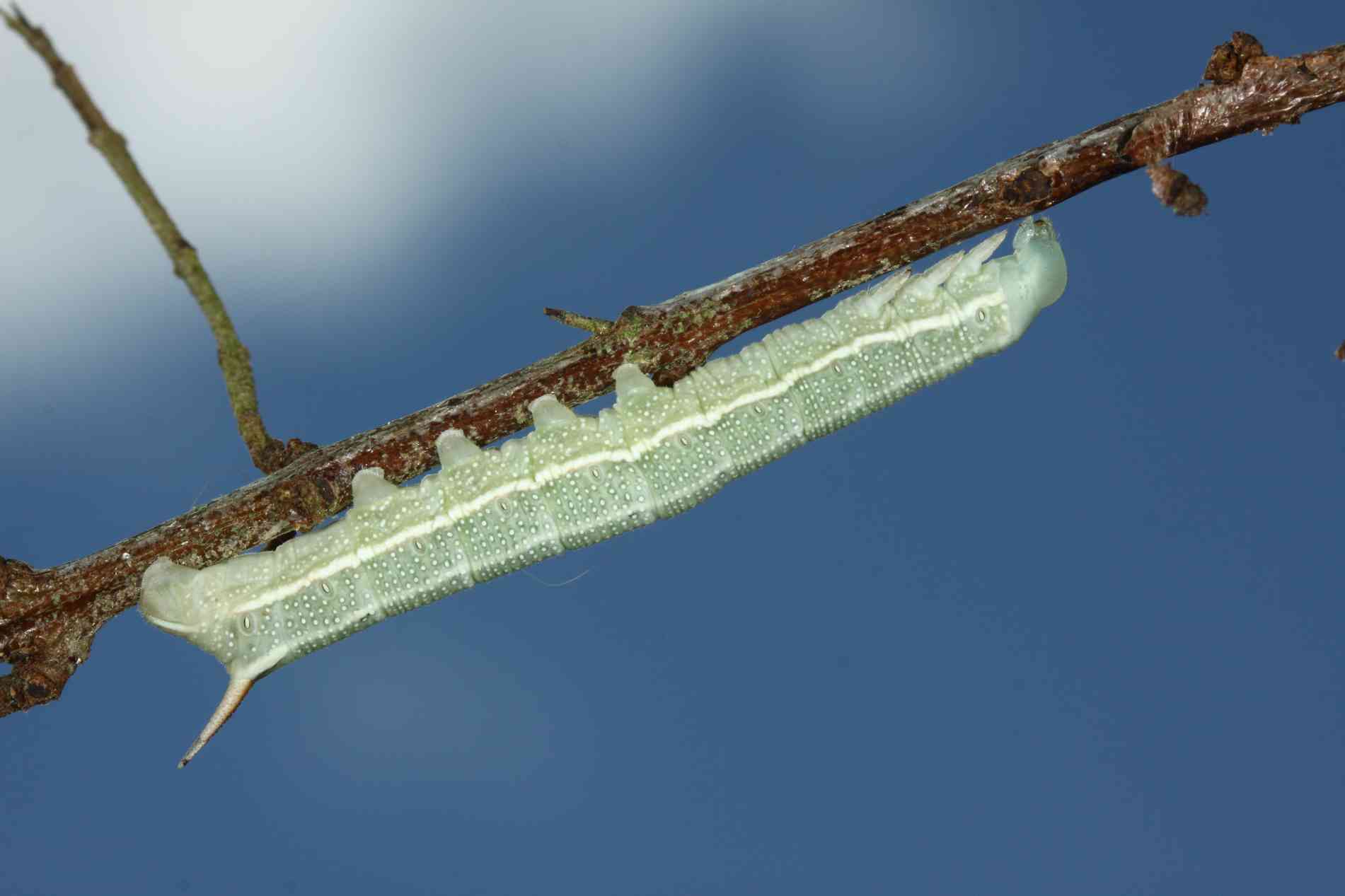
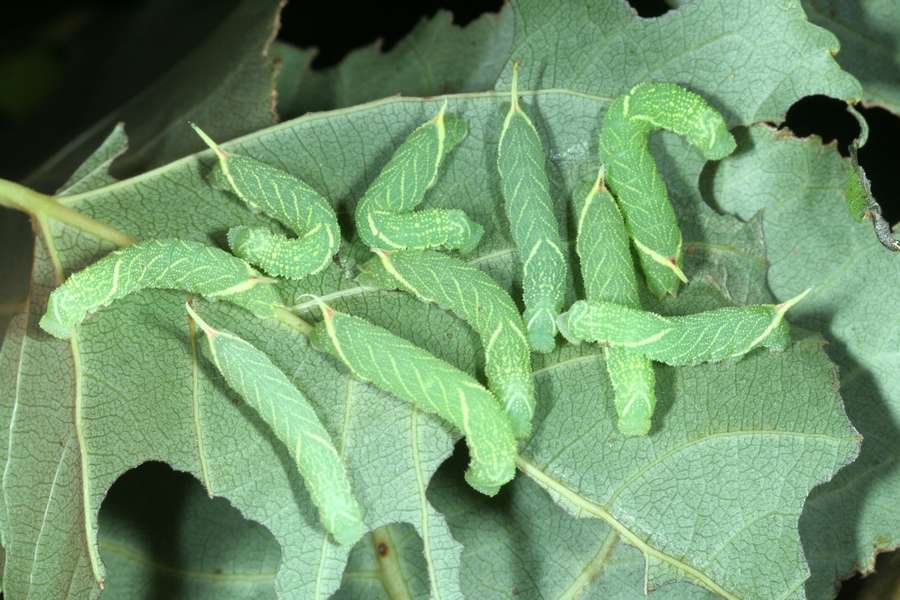
To the left, this caterpillar L3 of Hyles hippophaes is immobilized to L4. Right, test: know recognize you in this group of L3 of Laothoe populi caterpillars that will moult? If so, you are ready for successful breeding. © Jean Hanif
At the time of pupation and therefore at the end of fifth-instar the Caterpillar la chenille stops to eat, stops and often change color. She then travels a distance that can be considerable, looking for the place she considers ideal for the pupation. More often, she buries but can also weave a cocoon to the surface of the ground. The Caterpillar is Sphinx ligustri, for example, can go down to 20 cm deep while that of Hyles hippophaes rest surface and brings together some plant debris with silk for to pupate in a cocoon of rudimentary. We must therefore prepare a cage to pupation with in the background a mixture of lightweight soil and sand (at least 15 centimeters), and surface foam fragments, dead leaves, and various debris.
Do not place too many caterpillars in the read container, otherwise the past disturb those that begin in to pupate, or which develop their Lodge. Of course we must never touch a freshly formed pupa.
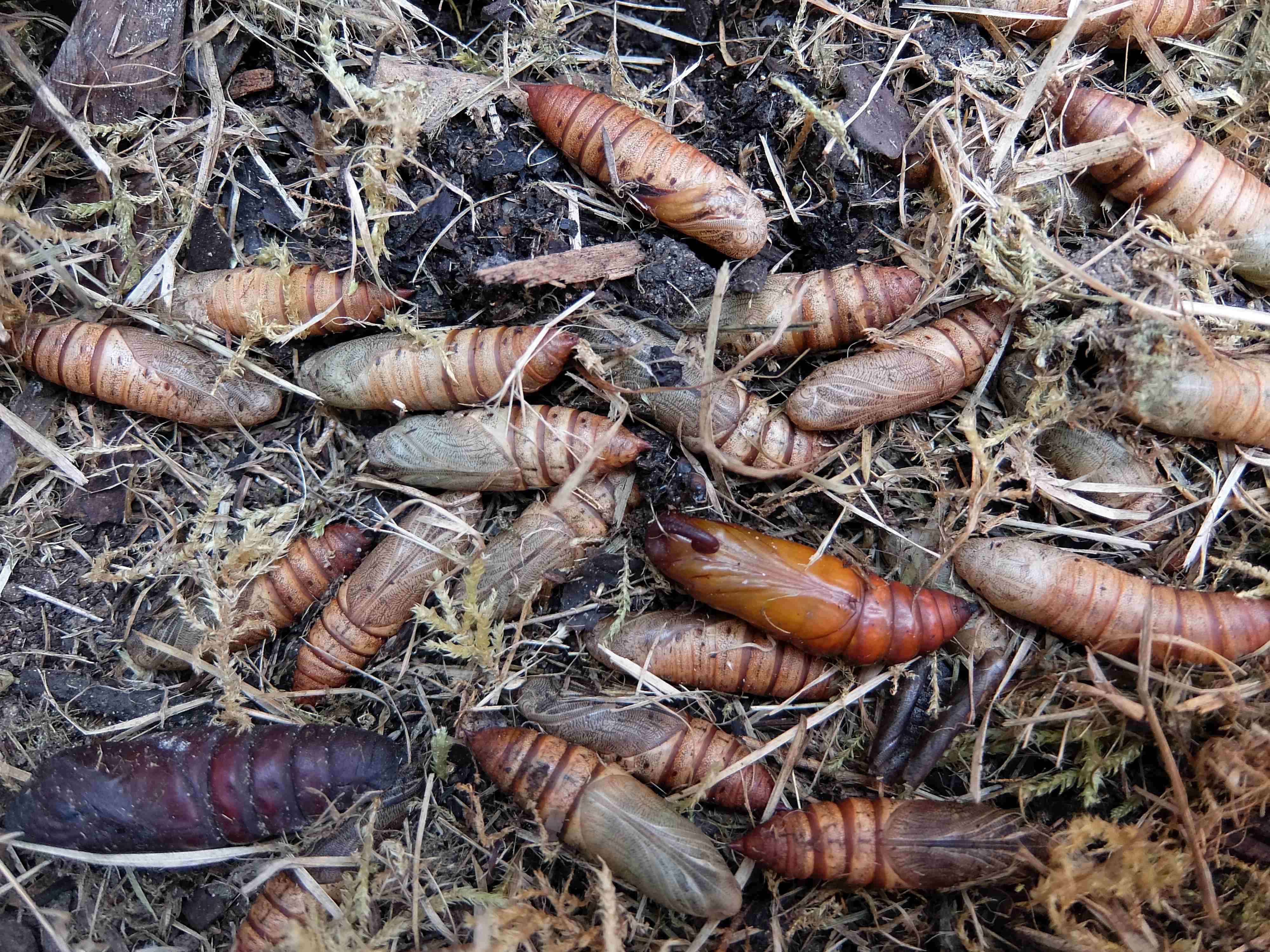
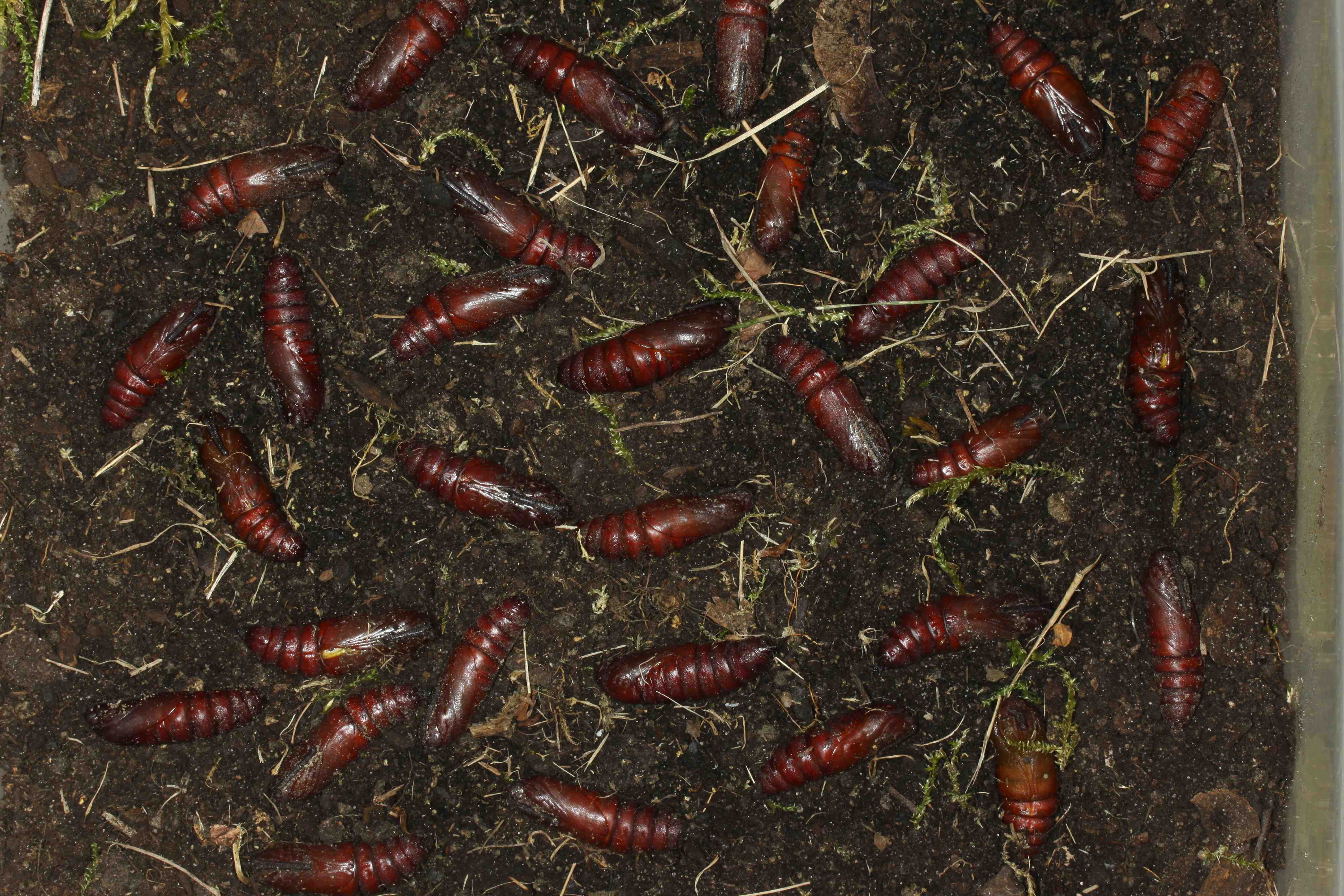
Pupae (4 species) of Sphingidae on substrate type peat + ground limestone + fresh Sphagnum ready to hybernation © Jean Hanif
Pupae spend the winter out, diapause is indispensable, and in addition, if you wish to release adult or continue farming by mating its females with wild males, it is important to be synchronous with the biological cycle. Need to think, from time to time, spray a little water on pupae / cocoons to avoid drying out. Also be aware that the worst enemy of pupae in winter is the rodent (mouse, Vole, mouse) or shrews, which can wipe out hundreds of Chrysalises in one night, out of the dozens of hours of work.
Note that the classic mistake is not to anticipate outbreaks. When a butterfly hatched, it must immediately be able to climb and hang wings down to be able to develop them. If it is in a vivarium with glass panel, is sure to fail, it will not climb, slide along the walls and will be deformed. It is therefore imperative to place pupae in cages with rough walls (fine mesh, non-planed wood…) so the emergence is a success.
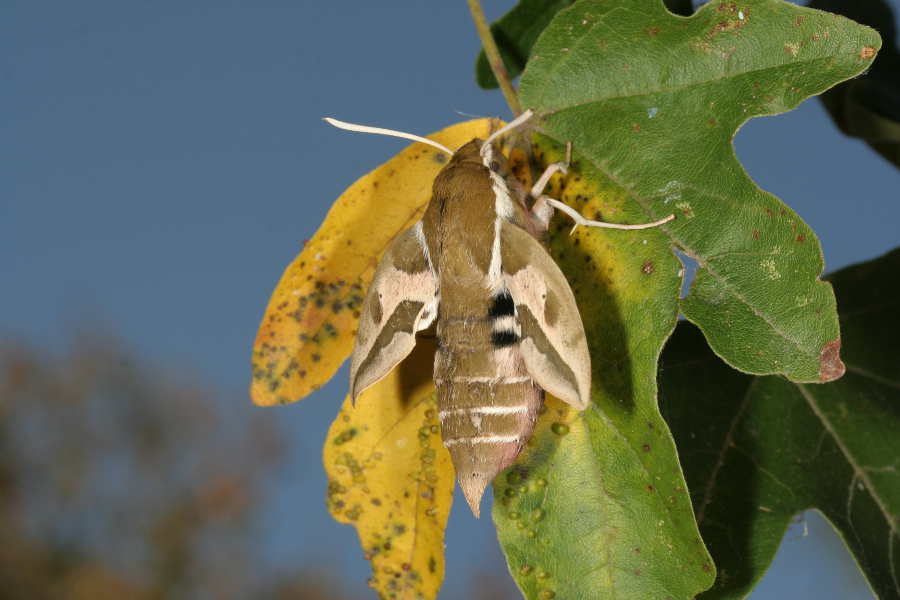
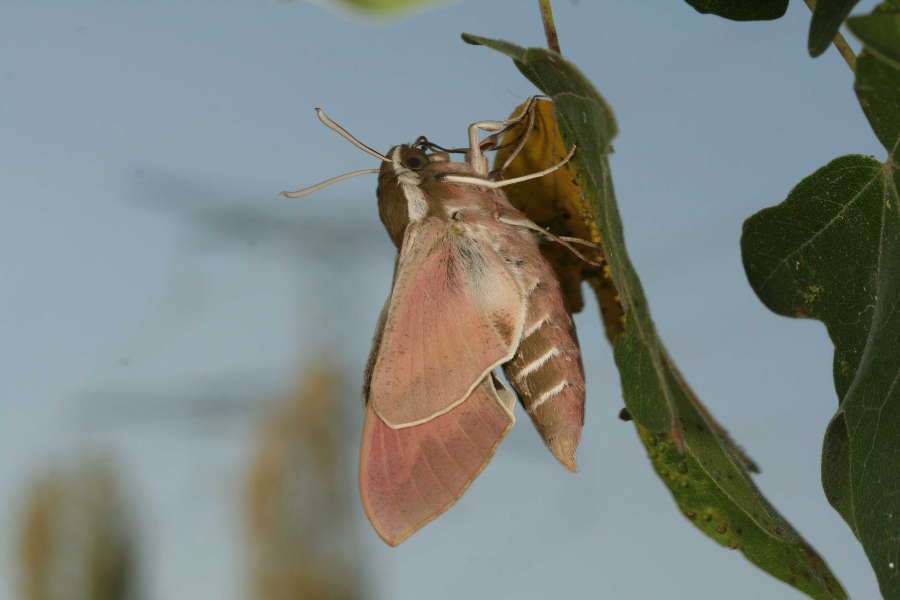
Hyles euphorbiae just after emergence, and the same with the wings developed, but not yet dry. He place it flat as soon as it is ready to take its © Jean Hanif vol.
Like any livestock, in summary, to raise caterpillars of Sphinx is a real work that does not suffer the roughly or amateurism, but what a joy when we see hatch at home a splendid elpenor after in picking up the Caterpillar in a ditch on Epilobium hirsutum!
